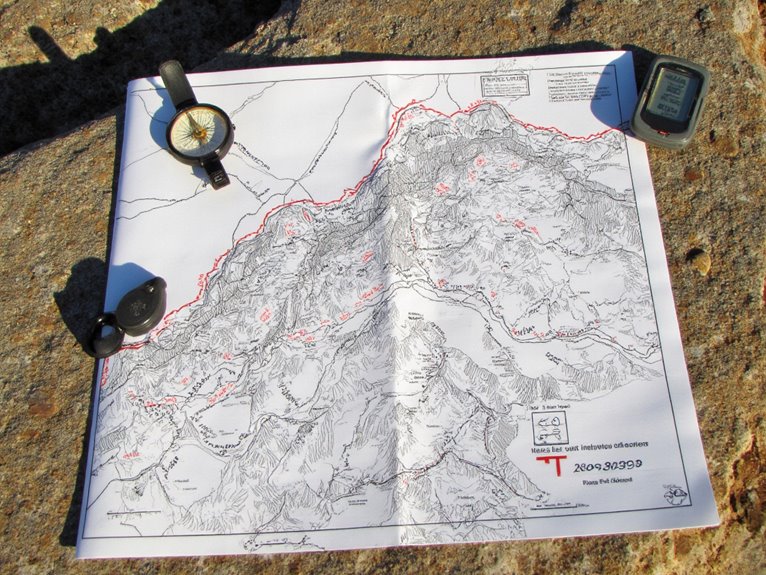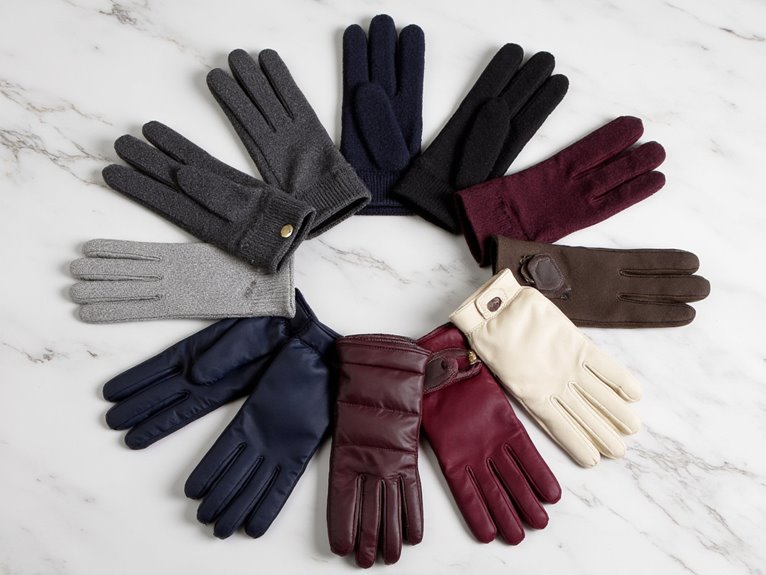How Big Is a 50L Bag?
A standard 50L bag, a common size for travel and outdoor gear, represents a specific volume of space equivalent to a large container or drum. Typical dimensions are 25-30 inches in height, 12-15 inches in width, and 10-12 inches in depth. This size offers a unique balance between capacity and portability, providing more space than smaller bags while remaining easier to transport than larger ones. When packed strategically, a 50L bag can fit 3-10 days' worth of clothing, depending on the type and amount of items. To fully understand the capacity and potential of a 50L bag, examine the nuances of packing and organization.
We are supported by our audience. When you purchase through links on our site, we may earn an affiliate commission, at no extra cost for you. Learn more. Last update on 22nd December 2025 / Images from Amazon Product Advertising API.
What Does 50 Liters Mean?
In the context of volume measurement, 50 liters represents a specific quantity of three-dimensional space that can be occupied by a substance, such as a bag of material or a container filled with a liquid or gas.
This unit of measurement is part of the International System of Units (SI) and is commonly used to express the volume of a wide range of substances, from water to chemicals.
In practical terms, 50 liters is equivalent to 50,000 cubic centimeters or 1.7642 cubic feet.
This quantity can be visualized as the volume of a standard-sized drum or a large container used for storage or transportation.
Understanding the meaning of 50 liters is essential for accurate measurements and conversions in various fields, including science, engineering, and commerce.
Dimensions of a 50L Bag
When exploring the dimensions of a 50L bag, we must take into account the interplay between height and width, as well as depth and thickness.
These factors profoundly impact the overall size and functionality of the bag.
Bag Height and Width
A standard 50L bag typically measures between 25 and 30 inches in height and 12 to 15 inches in width, although exact dimensions may vary depending on the manufacturer and design. These dimensions provide a general guideline, but it's essential to verify the specifications of your bag to guarantee accurate measurements.
Three key factors are vital when evaluating the height and width of a 50L bag:
- Manufacturer specifications: Check the manufacturer's website or product description for exact dimensions.
- Design and style: Backpacks, duffel bags, and luggage may have varying dimensions due to design differences.
- Packing efficiency: Think about the bag's internal compartments and how they can be optimized for efficient packing.
Understanding the height and width of a 50L bag is vital for effective packing and making certain your gear fits comfortably.
Depth and Thickness Matters
Beyond the height and width, the depth and thickness of a 50L bag are critical dimensions that substantially impact packing capacity and overall usability.
A deeper bag allows for more items to be stacked, while a thicker bag provides additional protection for fragile items.
Typically, a 50L bag has a depth of around 25-30 cm (10-12 inches) and a thickness of 5-7 cm (2-3 inches).
These dimensions enable efficient packing and organization, ensuring that gear remains accessible and secure.
When choosing a 50L bag, consider the depth and thickness in relation to your specific needs, as these dimensions greatly influence the bag's overall functionality and performance.
Volume to Size Ratio
The dimensions of a 50L bag, including its length, width, and depth, have a direct impact on its volume to size ratio, which is critical in determining the bag's overall packing capacity and efficiency.
A well-designed bag with optimal dimensions can fit more items while minimizing wasted space.
- Length and width: A longer and wider bag can accommodate more items, but may be less portable.
- Depth and thickness: A deeper bag can fit bulkier items, but may be heavier and less comfortable to carry.
- Proportional dimensions: A bag with proportional dimensions can maximize packing capacity while maintaining ease of transport.
Capacity Compared to Other Bags
Fifty-liter bags occupy a unique niche in the packing spectrum, offering substantially more capacity than smaller sacks while remaining more portable than larger alternatives.
When compared to smaller bags, such as 20L or 30L options, 50L bags provide notably more space for packing essentials.
Conversely, they are more compact than larger 70L or 80L bags, making them easier to transport.
This balance of capacity and portability makes 50L bags an attractive choice for travelers, hikers, and outdoor enthusiasts.
In contrast to specialty bags like backpacks or duffels, 50L bags offer a versatile and practical solution for a wide range of activities and trips.
How Much Clothing Fits Inside
When packing clothing into a 50L bag, the amount of items that fit depends on the type of clothing and the packing strategy employed.
For a minimalist approach, a 50L bag can fit around 3-5 days' worth of essentials, including a few shirts, pants, socks, and undergarments.
When packed to capacity, however, the bag can accommodate a more extensive wardrobe, including outerwear, layers, and accessories, for up to 7-10 days of travel.
Essentials Only
Pack a week's worth of essentials, including three to four tops, two to three bottoms, and a few accessories, into a 50L bag without compromising on comfort or style. This is achievable by packing smart and choosing versatile, mix-and-match pieces.
- Multipurpose jacket: A water-resistant and insulated jacket that can be worn in various weather conditions.
- Quick-drying pants: A pair of lightweight, breathable pants that can be dressed up or down.
- Moisture-wicking tops: A few tops that can be layered or worn on their own, suitable for various activities.
Packed to Capacity
By strategically selecting and arranging items, a 50L bag can accommodate a surprisingly large amount of clothing, including multiple tops, bottoms, and accessories, without compromising on organization or accessibility.
A general guideline is to pack 3-5 tops, 2-3 bottoms, and 1-2 dresses or jumpsuits, depending on their bulkiness.
Undergarments and socks can be stuffed into empty spaces or packed in small cubes. Accessories like hats, scarves, and belts can be rolled or folded to save space.
By utilizing packing cubes, compression bags, and strategic folding techniques, travelers can maximize their 50L bag's capacity while maintaining ease of access to their belongings.
This thoughtful approach guarantees a well-organized and efficiently packed bag, perfect for extended trips or adventures.
Packing Strategies for 50L Bags
Optimizing the use of a 50L bag's capacity requires careful consideration of how to strategically layer and arrange items to maximize space efficiency. A well-planned packing strategy can make all the difference in fitting everything you need into your bag.
- Roll clothing: Rolling your clothes instead of folding them can help reduce wrinkles and save space in your bag.
- Use packing cubes: Packing cubes can help you organize your belongings and compress your clothing to make the most of your bag's capacity.
- Pack essentials first: Identify the items you need immediate access to and pack them in an easily accessible location, such as the top pocket of your bag.
Real-Life Examples of 50L Bags
To illustrate the versatility of 50L bags, let's take a look at some real-life examples of how they can be used in various outdoor activities and travel scenarios.
A 50L bag is perfect for a week-long backpacking trip, allowing you to pack essential gear, clothes, and supplies comfortably.
On a camping trip, a 50L bag can carry a tent, sleeping bag, and other camping essentials.
For travelers, a 50L bag can fit a week's worth of clothing, toiletries, and souvenirs, making it an ideal carry-on or checked luggage option.
Whether you're hiking, camping, or traveling, a 50L bag provides ample space for your gear without being too bulky or overwhelming.
Choosing the Right 50L Bag
When selecting a 50L bag, it's essential to evaluate several key factors, including the type of activity, personal comfort, and gear requirements, to guarantee the right bag meets your specific needs.
To choose the perfect 50L bag, bear in mind the following key considerations:
Activity type: Will you be using the bag for hiking, camping, or travel? Different activities require different features, such as weather resistance or multiple compartments.
Personal comfort: Think about the bag's weight, shoulder straps, and hip belt to guarantee a comfortable fit.
Gear requirements: Reflect on the type and quantity of gear you need to carry, and look for a bag with suitable pockets and compartments.


